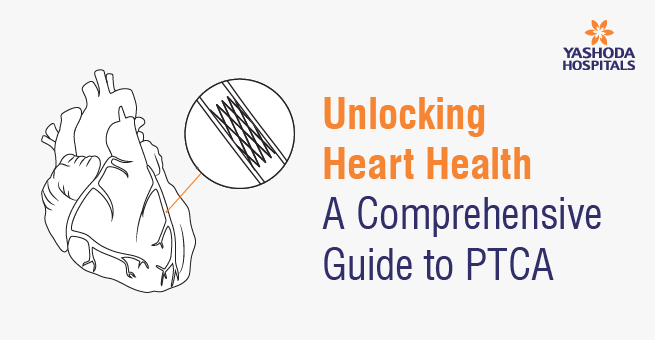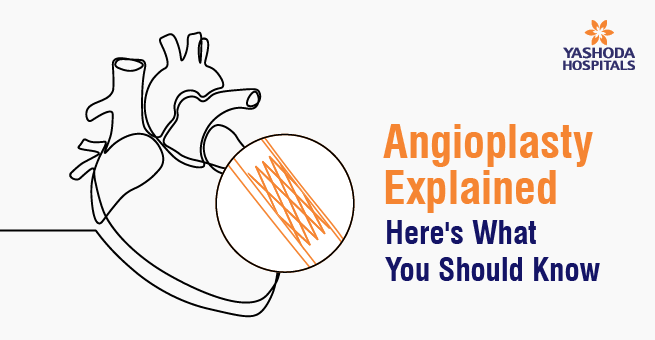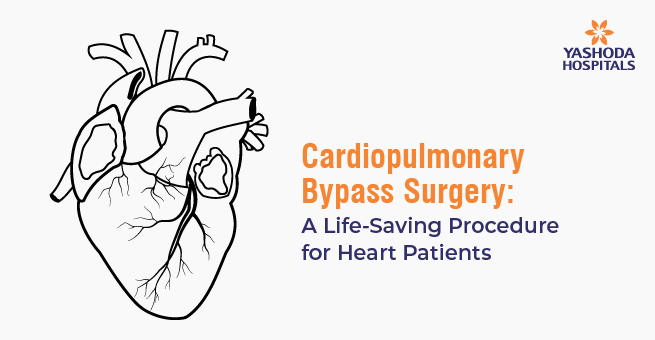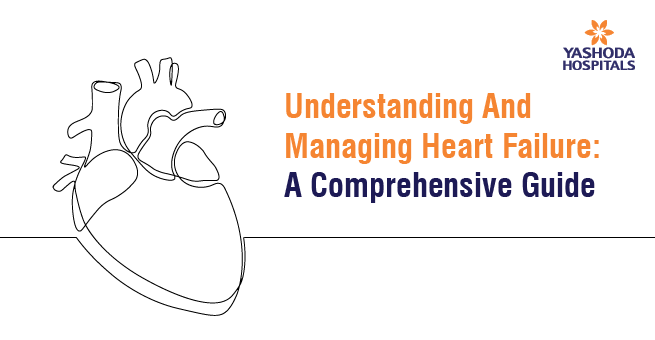Unlocking Heart Health: A Comprehensive Guide to PTCA

Percutaneous Transluminal Coronary Angioplasty, or PTCA, is a minimally invasive surgery that opens blocked or restricted coronary arteries to restore proper blood flow to the heart muscle. Atherosclerosis, a disorder marked by plaque building in the arteries, is typified by these blockages, which obstruct blood flow and are brought on by lipid-rich plaque accumulation. Coronary artery disease (CAD) results from atherosclerosis affecting the coronary arteries. It is imperative to underscore the need of an interdisciplinary team in the management of patients with CAD, as they evaluate the indications, contraindications, and possible problems linked to PTCA, guaranteeing all-encompassing patient care.
What is PTCA?
Percutaneous Transluminal Coronary Angioplasty (PTCA) begins with the application of local anesthesia to numb the groin area, followed by the insertion of a needle into the femoral artery in the leg. Through this, a guide wire is threaded, and then replaced with an introducer featuring two ports for flexible device insertion. After exchanging the initial guide wire for a thinner one, a diagnostic catheter is advanced through the introducer into the artery, guided to the aorta, and the original guide wire is removed.
Utilizing a PTCA balloon catheter, equipped with a small balloon at its tip, the narrowed or blocked coronary artery is accessed, and the balloon is inflated to compress plaque and widen the artery, thus restoring blood flow to the heart muscle and alleviating symptoms of coronary artery disease while reducing the risk of heart attacks.
PTCA Procedure: Pre-op & Post-Op
Preparation: The patient is typically awake during the procedure, but a local anesthetic is applied to numb the area, often in the groin or wrist, where the catheter will be inserted.
Catheter Insertion: A thin, flexible tube called a catheter is inserted through a blood vessel (usually the femoral artery in the groin or the radial artery in the wrist). The catheter is guided through the blood vessels toward the coronary arteries using X-ray guidance.
Guidewire Placement: A guidewire is threaded through the catheter and advanced to the site of the coronary artery blockage. The guidewire acts as a guide for the subsequent steps.
Balloon Angioplasty: A balloon-tipped catheter is advanced over the guidewire to the narrowed or blocked segment of the coronary artery. The balloon is inflated, compressing the plaque or blockage against the artery walls and widening the artery lumen.
Stent Placement (Optional): In some cases, a stent may be inserted into the treated area to help keep the artery open.
Post-Dilation (Optional): After stent placement, the balloon may be inflated again (post-dilation) to ensure optimal stent expansion.
Assessment: Contrast dye is injected through the catheter, and X-ray imaging is used to assess the treated artery, ensuring that blood flow has improved.
Catheter Removal: Once the procedure is completed, the catheter and guidewire are carefully removed.
Recovery: The patient is monitored for a short period after the procedure to check for any complications. Most patients can resume normal activities within a day or two.
PTCA is a minimally invasive alternative to coronary artery bypass surgery and is commonly performed to relieve symptoms of coronary artery disease and reduce the risk of heart attacks. It’s important to note that the specific details of the procedure may vary based on individual patient characteristics and the extent of coronary artery disease.
Take control of your heart health today. Schedule a consultation with our cardiology experts to learn more about PTCA !
PTCA vs PCI
Although the words Percutaneous Coronary Intervention (PCI) and Percutaneous Transluminal Coronary Angioplasty (PTCA) are sometimes used synonymously, they have subtle distinctions:
PTCA, a procedure commonly referred to as balloon angioplasty involves using a balloon-tipped catheter to widen a narrowed or blocked coronary artery, improving blood flow to the heart muscle. PTCA is a component of Percutaneous Coronary Intervention (PCI), a group of percutaneous treatments for coronary artery disease. While PTCA is a specific procedure within PCI, PCI encompasses a range of treatments including drug-eluting stents and atherectomy. PCI is a comprehensive approach to treating or opening coronary arteries, tailored to the patient’s needs and characteristics of their coronary artery disease.
What is Percutaneous Transluminal Angioplasty?
Percutaneous Transluminal Angioplasty (PTA) is a medical procedure used to open narrowed or blocked blood vessels, typically arteries. The term “percutaneous” means that the procedure is performed through the skin, without the need for open surgery. “Transluminal” refers to the passage through the vessel lumen (the central opening of the blood vessel), and “angioplasty” involves the mechanical dilation of the vessel.
PTA is commonly used to treat conditions such as peripheral artery disease (PAD) in arteries outside the heart, particularly in the legs. The goal is to alleviate symptoms like pain or improve blood flow to prevent complications associated with reduced blood circulation. The PTA procedure may also be performed in other arteries throughout the body, depending on the specific medical condition being addressed.
PTCA Complications
Although percutaneous transluminal coronary angioplasty (PTCA) is generally safe and effective, it does carry potential risks and complications. It’s important for patients undergoing PTCA to discuss the potential risks and benefits of the procedure with their healthcare provider and to be aware of the signs and symptoms of complications so that they can be addressed promptly if they occur. Most complications associated with PTCA are rare, and the benefits of the procedure often outweigh the risks, particularly in patients with significant coronary artery disease.
Post-PTCA Care
Post-PTCA care involves several key aspects to ensure a smooth recovery and optimize the benefits of the procedure. Patients are typically monitored closely in a cardiac care unit or recovery area immediately after PTCA. Here are some important components of post-PTCA care:
- Vital signs, including heart rate, blood pressure, and oxygen saturation, are closely monitored to detect any complications or signs of instability.
- Patients may be advised to remain in bed for a certain period to allow the arterial access site to heal and reduce the risk of bleeding or hematoma formation.
- Patients are often prescribed medications to help prevent blood clots (antiplatelet agents) and manage other cardiovascular conditions.
- Drinking plenty of fluid is very crucial to help flush out contrast dye used during the procedure and prevent kidney damage.
- The site where the catheter was inserted should be monitored for signs of bleeding, swelling, or infection. Patients may need to keep the area clean and dry and avoid strenuous activities that could disrupt the healing process.
- Patients typically have follow-up appointments with their healthcare provider to assess their recovery progress, review medications, and monitor for any complications or recurrence of symptoms.
- Patients may be advised to make lifestyle changes, such as quitting smoking, adopting a heart-healthy diet, increasing physical activity, and managing other risk factors for coronary artery disease.
Overall, post-PTCA care aims to promote healing, minimize complications, and support long-term cardiovascular health. It is essential for patients to follow their healthcare provider’s instructions closely and attend all scheduled follow-up appointments to optimize their recovery and outcomes.
Post-PTCA Care
Post-PTCA care involves several key aspects to ensure a smooth recovery and optimize the benefits of the procedure. Patients are typically monitored closely in a cardiac care unit or recovery area immediately after PTCA. Here are some important components of post-PTCA care:
- Vital signs, including heart rate, blood pressure, and oxygen saturation, are closely monitored to detect any complications or signs of instability.
- Patients may be advised to remain in bed for a certain period to allow the arterial access site to heal and reduce the risk of bleeding or hematoma formation.
- Patients are often prescribed medications to help prevent blood clots (antiplatelet agents) and manage other cardiovascular conditions.
- Drinking plenty of fluid is very crucial to help flush out contrast dye used during the procedure and prevent kidney damage.
- The site where the catheter was inserted should be monitored for signs of bleeding, swelling, or infection. Patients may need to keep the area clean and dry and avoid strenuous activities that could disrupt the healing process.
- Patients typically have follow-up appointments with their healthcare provider to assess their recovery progress, review medications, and monitor for any complications or recurrence of symptoms.
- Patients may be advised to make lifestyle changes, such as quitting smoking, adopting a heart-healthy diet, increasing physical activity, and managing other risk factors for coronary artery disease.
Overall, post-PTCA care aims to promote healing, minimize complications, and support long-term cardiovascular health. It is essential for patients to follow their healthcare provider’s instructions closely and attend all scheduled follow-up appointments to optimize their recovery and outcomes.
About Author –



















 Appointment
Appointment WhatsApp
WhatsApp Call
Call More
More

